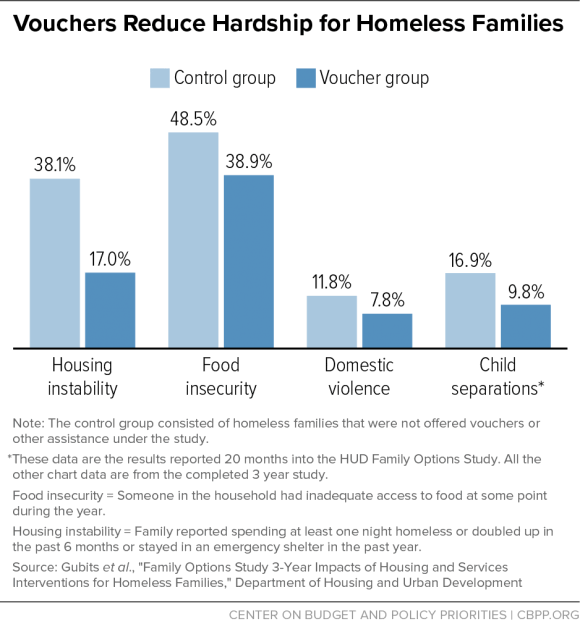BEYOND THE NUMBERS
This is the next post in our “Housing Vouchers Work” blog series, which provides the latest facts and figures about the Housing Choice Voucher program, the largest rental assistance program to help families with children, working people, seniors, and people with disabilities afford decent, stable housing.
Housing vouchers are the most important tool for ending homelessness. It’s easy to understand why: homelessness is mostly due to lack of affordable housing, and vouchers cover the gap between what families can afford to pay (typically 30 percent of their income) and their rent. Unless Congress increases housing voucher funding, community initiatives can only make limited progress toward ending homelessness for the hundreds of thousands of people who experience it each year.
For people without a home, basic needs are very hard to meet and safety is a constant concern. Getting a warm meal at a local soup kitchen can mean trudging long distances. Sleeping is nearly impossible outdoors or in a crowded shelter. Health is hard to manage with no place to store medicine, irregular meals, exposure to the elements, and the physical strain of being on foot. Families with kids face added challenges to keep them safe, get them to school, and find a quiet place for them to do homework.
Daily life, despite poverty, is simply more manageable in an affordable home, where people have “a refuge from the grind of work, the pressure of school, and the menace of the streets,” Matthew Desmond writes in Evicted.
Vouchers make the difference between homelessness and stability for many of the over 2 million households the program serves. And growing evidence shows that vouchers are key to ending homelessness for many different groups:
- Single adults. For many experiencing homelessness, affordability is the linchpin, meaning a voucher is all they need to achieve housing stability.
- Families. Vouchers are more effective at achieving housing stability for families than other forms of assistance, the Department of Housing and Urban Development’s Family Options Study found. Moreover, children in families with vouchers had fewer foster care placements, fewer school moves, and lower psychological distress — some of the problems associated with childhood homelessness. (See chart.)
- Veterans. Consistent increases in vouchers targeted on homeless veterans were key contributors to the 47 percent drop in veteran homelessness between 2010 and 2016.
- People with disabilities. Vouchers, coupled with health care and other services, are critical to the proven success of supportive housing in reducing homelessness among people with disabilities who experienced lengthy or repeated homelessness.
- Young adults. While the research on how to end homelessness among young adults is still developing, pairing a voucher with supportive services is a promising practice for youth with the highest needs, such as those transitioning out of the child welfare system.
Ending homelessness has long been a bipartisan goal, with the federal initiative to end homelessness beginning in the early 2000s under the Bush Administration and continuing through the Obama Administration. Given vouchers’ potential to end homelessness and stabilize individuals and families, policymakers should prioritize voucher funding in the 2017 and 2018 budgets.

